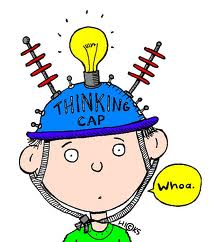Understanding the Mathematics
Before we explore some of the famous theorems of Euclidean Geometry, let's look into some of the building blocks necessary to understand Euclidean Geometry.
As Euclid used his geometry to explain and give value to the objects and space around him, we continue to use that knowledge to build art and explore new ideas. He understood the importance of definitions in mathematics.
Without definitions, words could have more than one meaning. It is important to understand all definitions and what they imply in any mathematics. Euclid also understood the importance of
avoiding circularity, which is coming back to where you started. With that, he created the postulates , which are statements that are accepted as true without proof. These became the building blocks of
proving his theorems. First, let's cover the possible ways to approach a problem and solve it.

- First, we have Inductive Reasoning which is the ability to make observations, discover relationships and similarities, and create general laws of nature. We use this in everyday life. For example, you are driving down
the road and you come upon a light that is red. First you observe the light is red. Next, from previous knowledge and the relationships that come along with the color red, you previously have created the law in your mind of stopping at the
light. You also understand the possible consequences of not following this rule. (i.e. an accident or getting pulled over by a cop) Now, this may not be the best example, but it gives you a good idea of the logical steps. The conclusions we come out with from this type of reasoning, we call them conjectures .
- Second, we have Deductive Reasoning which is using logic to make conclusions from postulates. Postulates are the building blocks for theorems , a statement proven on previously established statements. This starts with what are
called conditional statements . Conditional statements consist of two clauses: the first begins with "if" or "when" and the other with "then". For example, if a then b. In mathematical notation, it is represented with an arrow: a → b.
a and b can also be interchanged to create converse statements. Depending on the truth values for a and b, it will help prove the theorem as true or false. For a mathematical definition, both the conditional statement and the converse
must be true. Deductive Reasoning is the most common approach for problems.
Now that we have covered the two types of reasoning to approach a problem, we can talk about using a direct or indirect steps for proving theorems.
- A direct proof uses postulates and previously proven as true theorems in logical steps to proof the current theorem is true. Using what are called premises , justifications to the conclusion, it follow the form of: a → b, b → c and therefore, a → c. Since c is our conclusion, then it would be proven as true.
- A indirect proof makes the assumption at the beginning that leads to a contradiction, so that the contradiction indicates that the assumption is false and the desired conclusion is true. The indirect method always begins with the opposite statements of the desired conclusion of the theorem. For example: Suppose we want to show that d is true.
Well suppose that d is not true. If not d, then e. If e, then f and you continue until you come to a contradiction. Therefore, if not d is false, then d has to be true. The benefit of this approach is that some theorems are difficult to prove as true using the direct steps. With this method, we can prove that the opposite can't be true, so the original statements of the
theorem have to be true. This method has simplified many proofs of theorems.
 You can think of solving Euclidean problems like putting a puzzle together. Each indivdual piece is unique and has an important element that is needed for the whole picture. Once you start putting the pieces together, the closer you get to putting the whole picture together.
A theorem in Eucliden Geometry is like the puzzle. Each part of the conditional statement is important and brings the needed elements to start towards the conclusions. As you move through the steps, each new pieces brings on a new element that eventually leads you to the conclusion.
It is not always easy to pick the path. It takes time, knowledge, and pondering to find the correct path and there maybe be more than one possible path. Don't be afraid to make mistakes. You learn the most when you make mistakes.
You can think of solving Euclidean problems like putting a puzzle together. Each indivdual piece is unique and has an important element that is needed for the whole picture. Once you start putting the pieces together, the closer you get to putting the whole picture together.
A theorem in Eucliden Geometry is like the puzzle. Each part of the conditional statement is important and brings the needed elements to start towards the conclusions. As you move through the steps, each new pieces brings on a new element that eventually leads you to the conclusion.
It is not always easy to pick the path. It takes time, knowledge, and pondering to find the correct path and there maybe be more than one possible path. Don't be afraid to make mistakes. You learn the most when you make mistakes.
Understanding the Difference
There is also the Non-Euclidean Geometry. What is the difference?
With Euclid's work, he believed that lines were straight and could be infinitely long and so Euclidean geometry adopted this idea and continues to work in that realm.
Many centuries later, mathematicians brought about the idea that lines were actually thought to be curves in a plane with a fixed length. They also approached the assumption about parallel lines differently than Euclid.
Today, to begin working in the realm of Non-Euclidean Geometry, you have to negate Euclid's parallel postulate. This brought about the great work in the fields of Elliptic and Hyperbolic Geometry.
